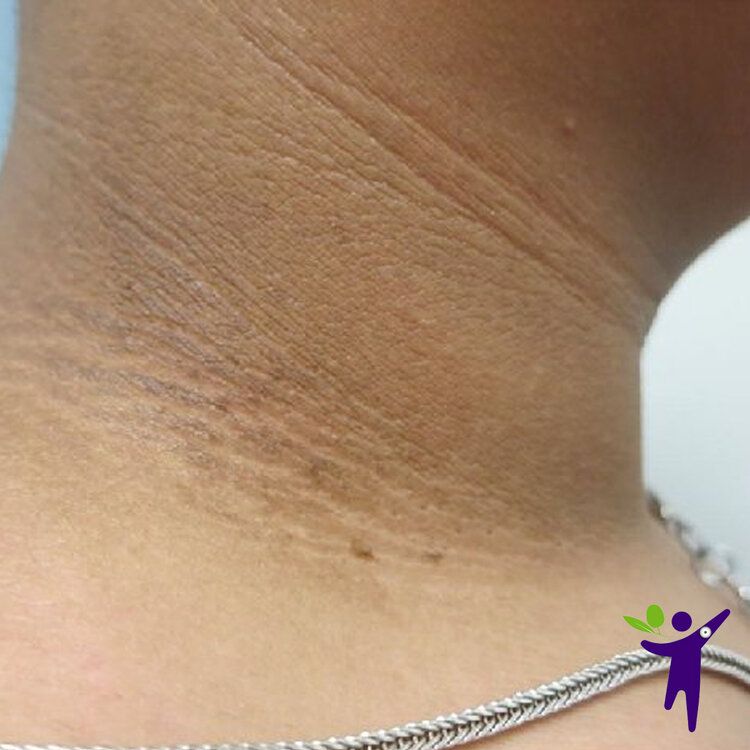Acanthosis nigricans is the medical name for dry, dark patches of skin that usually appear in the armpits, neck or groin. It could be a sign of an underlying condition, so it needs to be checked by your GP.
How do you know if you have Acanthosis Nigricans?
The main symptom is patches of skin that are darker and thicker than usual. They can appear anywhere on the body, the patches are dry and feel similar to velvet
They’re most common in skin folds, such as the armpits, neck or groin and some people also have tiny growths on the patches
The patches often appear gradually without any other symptoms, but sometimes the skin may be itchy.
Although it’s usually harmless, it’s best to get any skin changes checked out because in rare cases it can be a sign of something more serious such as cancer.

What causes Acanthosis Nigricans?
The most common cause of acanthosis nigricans is having raised insulin levels (more about this below) hence it is more common in overweight people.
Other causes include:
- prediabetes or type 2 diabetes
- conditions that affect hormone levels – such as Cushing’s syndrome, polycystic ovary syndrome or an underactive thyroid
- taking certain medicines – including steroids or hormone treatments like the contraceptive pill
- in rare cases, cancer – usually stomach cancer
- in rare cases, a faulty gene inherited from your parents
Sometimes Acanthosis Nigricans happens in healthy people with no other conditions. This is more common in people with dark skin.
How is Acanthosis Nigracans related to type2 diabetes?
If you have a diet high in carbs and sugars, your insulin will be high as a result. (Insulin controls blood sugar, so more sugar = more insulin). But insulin has numerous other actions on the body, one of which is cell-proliferation (important for example at puberty, when the body grows rapidly). Uncontrolled cell-growth is a bad thing however, which is why people with type2 diabetes are more prone to cancer. Acanthosis Nigracans is essentially benign and harmless but it DOES indicate that your insulin levels are probably too high. The raised insulin (called hyperinsulinaemia) causes proliferation of the surface of the skin as well as excess melatonin production. Hence the thickening and darkening of the skin.
What is the treatment for Acanthosis Nigracans?
There is no treatment as such, but the good news is that if you improve your diet and lifestyle, you can bring your sugar back under control, you insulin levels will normalise and the dark, raised patches often fade over time
As ever drop us a line with any queries – no pressure – just helpful qualified, professional advice.
#health #sugar #processed #fat #diabetes #prediabetes #bloodpressure #bloodsugar





